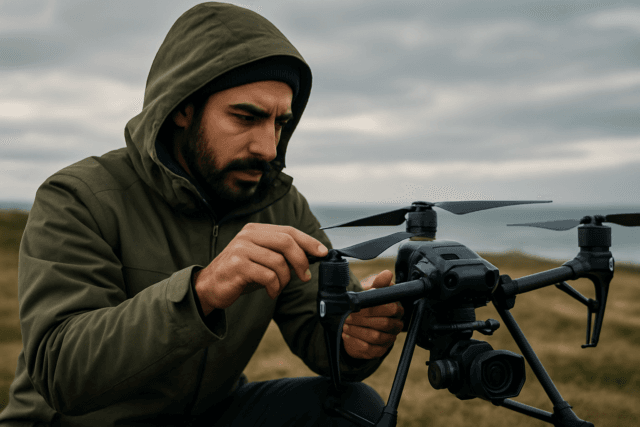The burgeoning field of drone delivery services is revolutionizing logistics, promising faster, more efficient, and often more environmentally friendly transportation of goods. However, operating unmanned aerial vehicles (UAVs) for commercial delivery, especially remotely, demands a rigorous set of training, certifications, and operational proficiencies from pilots. These requirements ensure public safety, airspace integration, and the reliable functioning of complex drone systems.
Foundational Remote Pilot Certification
Before engaging in drone delivery, aspiring remote drone operators must acquire fundamental certifications that establish their competency in drone operation and aviation regulations. These base requirements vary by region but share common principles of safety and aeronautical knowledge.
United States: FAA Part 107 Remote Pilot Certificate
In the United States, the Federal Aviation Administration (FAA) mandates that anyone operating a small unmanned aircraft system (sUAS) for commercial purposes, including package delivery, must hold a Part 107 Remote Pilot Certificate.
- Eligibility: To be eligible, an individual must be at least 16 years old, be able to read, speak, write, and understand English, and be in a physical and mental condition to safely fly a drone.
- Knowledge Test: Certification requires passing an initial aeronautical knowledge test, “Unmanned Aircraft General – Small (UAG)”. This exam covers critical topics such as:
- Applicable regulations related to sUAS operations.
- Airspace classification, operating requirements, and flight restrictions.
- Aviation weather sources and effects on drone performance.
- Small unmanned aircraft loading and performance.
- Emergency procedures.
- Crew resource management.
- Radio communication procedures.
- Maintenance and preflight inspection procedures.
- Recurrent Training: To maintain currency, certificate holders must complete online recurrent training every 24 calendar months.
While Part 107 permits the transportation of property for compensation, it comes with significant limitations, notably the requirement to maintain visual line-of-sight (VLOS) with the drone and restrictions on flight over people or moving vehicles.
Europe: EASA Remote Pilot Competency Certificate
In Europe, the European Union Aviation Safety Agency (EASA) sets the regulatory framework for drone operations. Drone operators must register with their National Aviation Authority, and pilots need to complete necessary online training, pass an exam, and obtain a valid remote pilot competency certificate, which is valid for five years. This framework enables various drone services, including parcel delivery, particularly in urban environments for medium-risk operations.
United Kingdom: CAA Operator and Pilot Certifications
The UK Civil Aviation Authority (CAA) also regulates commercial drone operations. Operators typically need either a Permission for Commercial Operations (PfCO) or an Operational Authorisation. Pilots flying under the Specific or Open categories usually require a General Visual Line of Sight Certificate (GVC) or an A2 Certificate of Competency (A2 CofC). These certifications involve training courses, theoretical knowledge tests, and often practical flight assessments.
Specialized Training for Drone Delivery Services
Drone delivery often pushes beyond the standard limitations of basic commercial drone operations, requiring additional training and certifications, primarily related to Beyond Visual Line of Sight (BVLOS) operations and handling cargo.
Beyond Visual Line of Sight (BVLOS) Operations
A critical aspect of scalable drone delivery is the ability to operate drones Beyond Visual Line of Sight (BVLOS). This means the remote pilot does not maintain direct unaided visual contact with the aircraft. BVLOS operations greatly expand capabilities, allowing for longer-range deliveries and operations over larger areas. However, they also introduce additional risks and, consequently, more stringent training requirements.
BVLOS training typically covers:
- Advanced Air Law and Regulatory Framework: A deeper understanding of the specific regulations governing BVLOS flights, which often require special authorizations, waivers, or specific operational certificates (e.g., FAA Part 135 in the US).
- Mission Planning and Risk Assessment: Comprehensive training in planning complex missions, including detailed risk assessments to mitigate hazards associated with flying beyond direct sight.
- Detect and Avoid (DAA) Systems and Procedures: Proficiency in using advanced onboard technology and established procedures to detect and avoid other aircraft, obstacles, and unexpected situations when the drone is not visually observable.
- Advanced Navigation and Control: Developing skills to navigate and control drones effectively relying on instrumentation and telemetry, rather than direct visual cues.
- Emergency Protocols: Specific emergency procedures tailored for BVLOS scenarios, including loss of communication or GPS.
Regulatory bodies like the UK CAA are actively developing roadmaps for BVLOS operations to fully unlock the potential of drone delivery, including for critical services like medical supplies.
Cargo and Payload Handling
Drone delivery services inherently involve carrying payloads. Operators must be trained in:
- Secure Payload Attachment: Ensuring that any external load is securely attached and does not negatively affect the drone’s flight characteristics or controllability.
- Weight and Balance: Understanding the impact of payload weight and distribution on drone performance and stability. Part 107 operations limit the aircraft with payload to less than 55 pounds at takeoff.
- Hazardous Materials: Specific training is crucial for operators if the delivery service involves transporting dangerous goods. In the US, Part 107 prohibits carrying hazardous materials, and only Part 135 allows for UAS to carry the property of another for compensation beyond VLOS, requiring a dangerous goods training program.
- Specialized Cargo Drone Training: Some institutions offer specific training on how to operate cargo drones, covering hardware and software modifications for carrying goods.
Operational Authorizations for Delivery
Beyond basic pilot certification, companies operating drone delivery services often need further operational authorizations, especially for BVLOS and complex operations.
- FAA Part 135 Certification (USA): For drone delivery operations that involve carrying the property of another for compensation beyond visual line of sight (BVLOS), the FAA utilizes its existing Part 135 Air Carrier and Operator Certification process. This is a comprehensive certification requiring extensive documentation, including company manuals, training plans, and demonstrated adherence to high safety standards, similar to traditional air carriers. Waivers and exemptions are often sought to adapt these rules for drone-specific challenges.
- EASA Specific Category Operations (Europe): EASA’s framework allows for UAS operations in the “specific category” for medium-risk scenarios, which can include parcel delivery in urban areas. This involves detailed risk assessments and compliance with airworthiness standards.
- UK CAA Operational Authorisation (UK): Businesses in the UK looking to operate drones for delivery services, especially under the Specific category, must obtain an Operational Authorisation from the CAA, which requires demonstrating safe operation through risk assessments and an operations manual.
Continuous Learning and Advanced Skills
The drone industry is rapidly evolving, making continuous learning vital for remote drone operators in delivery services. Beyond certifications, key skills and areas of ongoing training include:
- Software and Automation Proficiency: Familiarity with flight planning software, autonomous flight systems, and data management tools.
- Drone Maintenance: Basic understanding of drone hardware, routine checks, and troubleshooting to ensure airworthiness before and during flights.
- Communication Skills: Effective communication with air traffic control (where applicable), ground crews, and customers.
- Environmental Factors: Advanced understanding of how weather conditions, electromagnetic interference, and terrain affect drone performance and safety.
- Regulatory Updates: Staying informed about evolving local, national, and international drone regulations.
The path to becoming a remote drone operator for delivery services is multifaceted, demanding not only core piloting skills but also specialized knowledge and continuous adaptation to a dynamic regulatory and technological landscape. These rigorous training requirements are essential to harness the full potential of drone delivery safely and efficiently.





